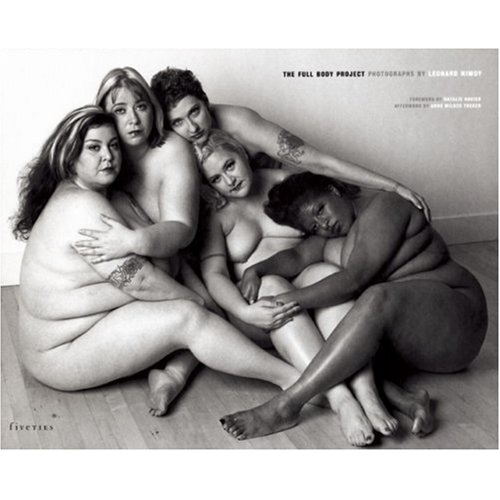|
 LEONARD NIMOY- The Full Body Project LEONARD NIMOY- The Full Body Project
Every culture has it own ideals for the perfect woman and in our culture… the skinnier the better. You can not turn on the television without seeing an advertisement for a weight loss program or the latest diet pill. Open a women’s magazine and you will inevitably see at least one weight loss article or a size two model wearing this seasons fashions. Even the radio shouts lipo suction and breast augmentation into the ears of desperate women. All these programs are designed to help the average woman reach unachievable goals and, as women who have been conditioned to equate happiness with being thin, we too often embrace society’s image of the perfect woman and strive to reach an unobtainable state of perfection that can only leave us feeling inadequate and undesirable.
It is refreshing to know that in a world obsessed with thin, Leonard Nimoy and a group of burlesque performers know as the Fat-Bottom Revue have challenged the idea of the acceptable body image in a pictorial called “The Full Body Project. “ In creating this project Nimoy references various works such as Matisse’s “Dance,” Marcel Duchamp’s “Nude descending a Staircase,” “The Three Graces” by Raphael, and Herb Ritts’ famous photo of four nude fashion models sitting on the floor. This referential attribute successfully intensify the intrigue of the photographs. All of the works referenced, classic or contemporary, portray the ideal woman as imposed by society, yet the full figured women of this project posed in the same manner absolutely defy this image.
The women in Nimoy’s photographs are beautiful, confident, and admirably courageous. They have what so many women lack, the ability to be comfortable in their own skin. They have taken a firm step in changing society’s view of women by creating a forum for discussion. Upon viewing these photos it is impossible to disregard their origins, the models, the influence of media, or the pressing issue of weight which afflicts the lives of so many women in society today. They also raise the question of what is healthy vs. what is fashionable and what is not. If this brilliantly artistic display says one thing I think it is this, we are a society of individuals with individual body types and we need to treasure, nourish, and respect our bodies-not transform them.
|









